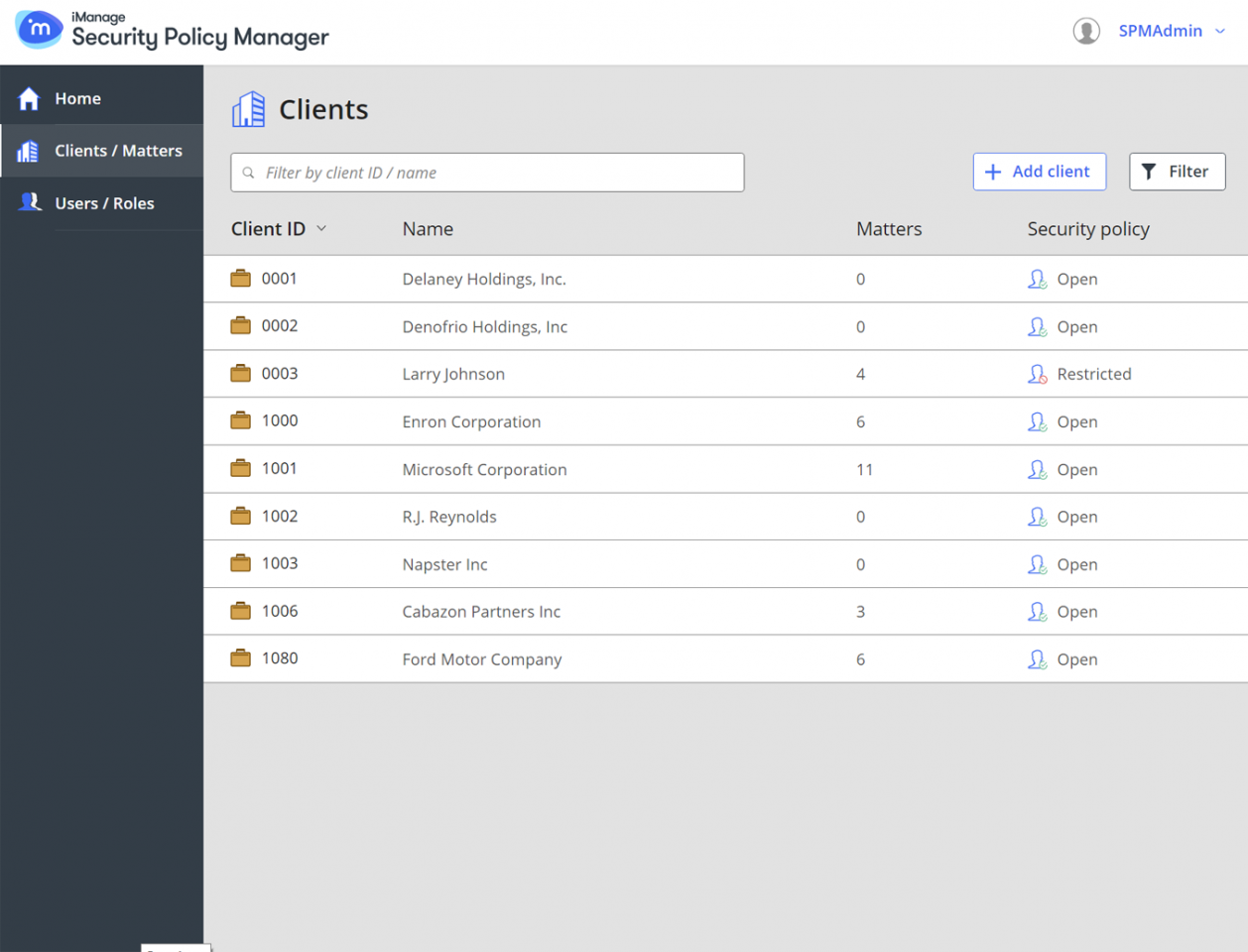
To use fuzzy searching to account for misspellings, follow the term with ~ and a positive number for the number of corrections to be made.(Example: shortcut^10 group gives shortcut 10 times the weight as group.) Follow the term with ^ and a positive number that indicates the weight given that term. For multi-term searches, you can specify a priority for terms in your search.

#IMANAGE WORKSPACE MANAGER SOFTWARE#
(Example: title:configuration finds the topic titled “Changing the software configuration.”)
#IMANAGE WORKSPACE MANAGER INSTALL#
The search also uses fuzzy matching to account for partial words (such as install and installs). If you type more than one term, an OR is assumed, which returns topics where any of the terms are found. It should be noted that custom2 profile's Alias Format must resolve to a uniqueness within all custom2 profile values within the parent custom1 profile value in the iManage® Work.The search returns topics that contain terms you enter. In addition to Alias Format, we also need to provide a Parent Alias Format here, which should be the merge field being used to map within the account object's custom1 profile's Alias Format. The Alias Format may be provided to use a matter number or any other merge field that can uniquely identify a matter in iManage® work's custom2 table of records. For the matter object based configuration, the custom profile that will be used to identify the workspace association would be custom2.

The Alias Format may be provided to use an account number or any other merge field that can uniquely identify a client in iManage® work's custom1 table of records. For the account object based configuration, the custom profile that will be used to identify the workspace association would be custom1.Both configurations can be set up to identify Workspace Association By custom profile.We set up separate workspace manager configurations for each object type, which in this case would be account and matter.The setup within Salesforce would look something like this:

( This option is available for profile types of lookup data type and for custom2 and custom30 profiles only.)Ī common use case to implement custom2/ custom30 profile types involve setting up a client-matter relationship hierarchy within iManage® and Salesforce®.įor example, we can have an account and a matter identified with custom1 and custom2 profile types respectively in iManage® Work. Make sure that when merge fields are used (or when a static value is provided) that the resolved alias value is unique throughout iManage® Work for the current custom profile being setup here.

Your iManage® authentication setup is complete and you can proceed to the next step to setup the Workspace Configurations. Once all values have been provided, select the Save button to save the configuration values. (This option is not available unless it has been activated for your organization by AdvoLogix®, please contact your AdvoLogix® account executive for more details) When this is enabled, then all files uploaded from Salesforce® to iManage® Work go through the pass-through AWS platform, with an individual file capacity up to 1 GB size. For more details follow this article.Ħ) Enter your API Key as it has been generated in your Application under Step 5 above.ħ) Enter your API Secret as it has been generated in your Application under Step 5 above.Ĩ) Enable Use AWS Cloud for File Uploading, if you want to upload large files from Salesforce to iManage. apex/imanageconnectĥ) Enable Use Private Keys toggle, if you've created your own iManage Web Authentication Application.


 0 kommentar(er)
0 kommentar(er)
